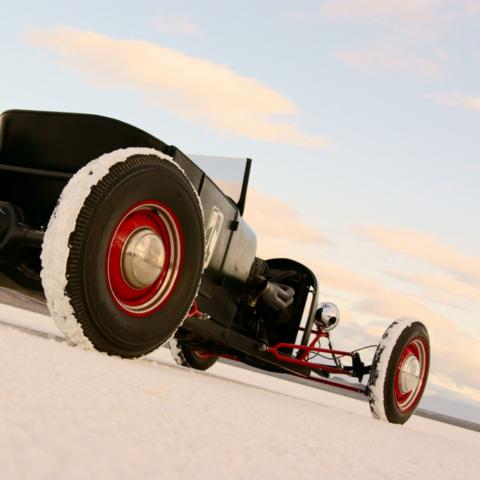Attend a RACE at BONNEVILLE Speedway, Utah
 Bonneville Speedway is an area of the Bonneville Salt Flats near Wendover, Utah, that is marked out for motor sports. It is particularly noted as the venue for numerous land speed records. The salt flats were first used for motor sports in 1912, but didn't become truly popular until the 1930s when Ab Jenkins and Sir Malcolm Campbell competed to set land speed records.
Bonneville Speedway is an area of the Bonneville Salt Flats near Wendover, Utah, that is marked out for motor sports. It is particularly noted as the venue for numerous land speed records. The salt flats were first used for motor sports in 1912, but didn't become truly popular until the 1930s when Ab Jenkins and Sir Malcolm Campbell competed to set land speed records.In August, the Southern California Timing Association and Bonneville Nationals Inc. organize SpeedWeek, the largest meet of the year, which attracts several hundred drivers who compete to set highest speed in a range of categories.
In late August, the BUB Motorcycle Speed Trials are held.
In September each year is the World of Speed, (similar to Speedweek) organized by the Utah Salt Flats Racing Association. The USFRA also meet on the first Wednesday of each month throughout the summer.
In October, the Southern California Timing Association puts on World Finals, a scaled down version of SpeedWeek.
Each year, there are usually a few private meets that are not publicized scattered between the larger public meets.
Historically, the speedway was marked out by the Utah Department of Transportation at the start of each summer. Originally, two tracks were prepared; a 10 mile long straightway for speed trials and an oval or circular track for distance runs, which was typically between 10 and 12 miles (16 and 19 km) long depending on the condition of the salt surface.
Since at least the 1990s, track preparations have been the responsibility of the event organizers. Days or weeks in advance, the track preparers identify an area best suited for their track layouts and begin grading the tracks. Surveyors are brought in to survey the timing trap distances. A day before racing begins, the track markers are added.
Originally, the straightway was marked with a broad black line down its center. This was eventually changed to lines down either side, as the center line wore out too quickly. As the costs for painting the lines has gone up, organizations have switched to flags and cones as track markers. The last event to use black lines was SpeedWeek, August 2009.
The number of tracks and the timed sections for each track are set according to what is most beneficial for each event. Large public meets such as SpeedWeek run as many as four tracks with several timed miles, usually starting with the second mile and running to the fifth mile. Smaller meets that typically only run world record attempts will utilize a single track, with one timed mile and one timed kilometer in the middle of the track. Additional marks and cones indicate the end of the track and the position of timing equipment.
Source: wikipedia.org